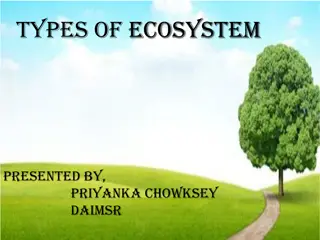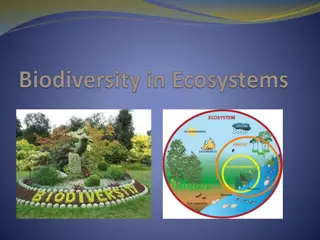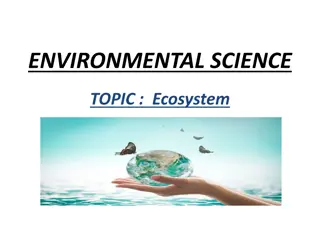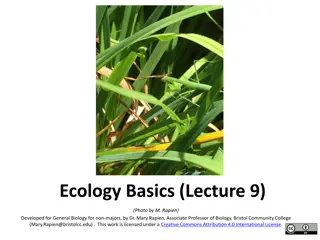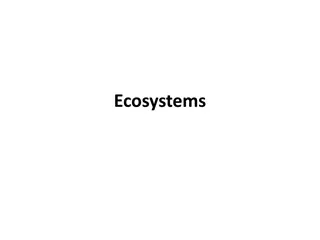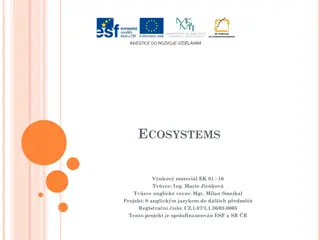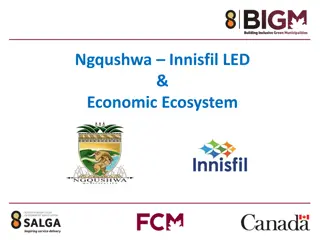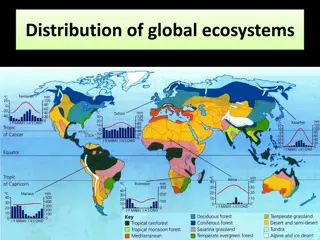Ecosystems Vocabulary Review Game - Chapter 4
Engage in a fun vocabulary review game based on surviving in ecosystems. Teams compete to answer questions on adaptations like mimicry, camouflage, migration, and hibernation. Participants demonstrate knowledge of how organisms survive in their environments through various traits and behaviors. The game fosters teamwork, critical thinking, and learning about the natural world.
Download Presentation

Please find below an Image/Link to download the presentation.
The content on the website is provided AS IS for your information and personal use only. It may not be sold, licensed, or shared on other websites without obtaining consent from the author.If you encounter any issues during the download, it is possible that the publisher has removed the file from their server.
You are allowed to download the files provided on this website for personal or commercial use, subject to the condition that they are used lawfully. All files are the property of their respective owners.
The content on the website is provided AS IS for your information and personal use only. It may not be sold, licensed, or shared on other websites without obtaining consent from the author.
E N D
Presentation Transcript
CHAPTER 4:SURVIVING IN ECOSYSTEMS Vocabulary Review Game
DIRECTIONS! Each team member on your team was given a number. Don t forget your number! When I call aloud your number, you will be the scribe for your team for that particular round. Work together with the rest of your team to come up with the correct answer for each question. Remember, do not let other teams steal your answer. So, keep your whiteboards covered! You will have 30 seconds to answer each question. If your team answers the question correctly, your team will earn a point. If your team s answer is incorrect, no points will be given. The team with the most points at the end of the game will win $2.00 classroom cash per player!
1. Some organisms copy the traits of other living things in their environment. This adaptation is called _____________. A. mimicry B. camouflage C. extinction D. hibernation
2. Any trait that helps an organism survive in its environment is called a(n) ________________ . A. trait B. adaptation C. camouflage D. mimicry
3. Some animals periodically ___________ to different locations for warmer weather. A. adapt B. camouflage C. migrate D. survive
4. The fur of an artic fox changes color so it can blend into its environment. This adaptation is called ____________. A. camouflage B. hibernation C. mimicry D. adaptation
5. Some animals survive the cold winter because they are able to remain completely still for a long period of time, or __________ . A. adapt B. mimicry C. hibernate D. none of these
6. True or False: Living things have different adaptations that make them better suited to the challenges in their environments and help them to survive. True!
7. True or False: An organism with camouflage cannot hide from predators because it blends in with the colors and shapes of its environment. False!
8. How did Mount Saint Helens change between 1980 and 1995? In 1980, the land was nothing but ash and there were no living things or plants and trees. In 1995, the land became rich in nutrients and began to grow plants and trees and other living things.
9. Gator holes help many animals survive times of ___________ . A. volcano B. hurricane C. landslide D. drought
10. True or False: The green stems of plants grow downward, away from gravity. False; the green stems grown upward!
11. The response of a plant to a stimulus is called a(n) ___________ . A. tropism B. adaptation C. behavior D. mimicry
12. True or False: Like animals, plants have adaptations for various environments. True!
13. Something in the environment that causes a living thing to react is called a(n) ____________ . A. tropism B. response C. stimulus D. None of these
14. A living thing that has few of its kind left is called ____________ . A. extinction B. endangered C. accommodation D. None of these
15. True or False Ecosystems remain the same. False; ecosystems do not remain the same. They are always changing.
16. What are two examples of a natural event that occurs as a change to an ecosystem? ___hurricanes__________ , ______droughts________ , ____landslides________, or ___volcanos___________ .
17. An individual organisms response to changes is called ___________ . A. accommodation B. behavior C. stimulus D. response
18. True or False: An example of an endangered species is a panda bear. True!
19. True or False: Not all animals can adjust to changes. True!
20. Too much rain in an environment can cause a ______________ . A. landslide B. drought C. hurricane D. flood
21. The process of cutting down too many forest trees and using these trees to build things is referred to as _______________ . A.overpopulation B. logging C.pollution D.deforestation
22. True or False: Deforestation destroys forest habitats or many organisms. Living things lose their homes and sources of food. True!
23. When too many people live in an area it is called _______________ . A. overpopulation B. deforestation C. endangered D. None of these
24. What is one way in which people can help an ecosystem? _____recycling____ or saving water
25. True or False: Littering is a kind of pollution. True!
BONUS What is the purpose of the camels hump? It stores water and fat for energy to help the camel to adapt to its natural environment.
BONUS What part of the cactus helps it to keep its water inside, acting as a sponge effect? The thick, waxy, outer covering
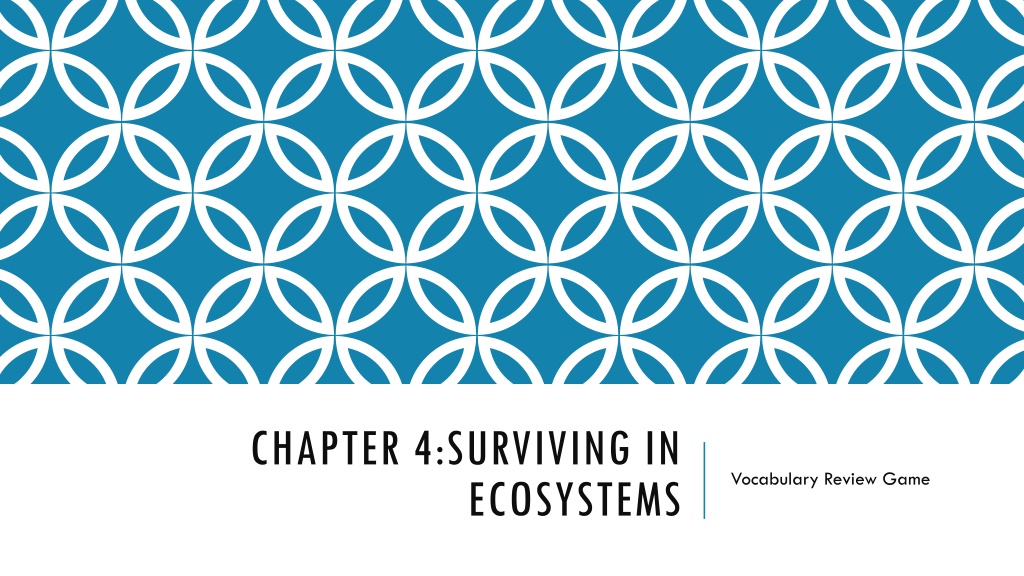
 undefined
undefined







